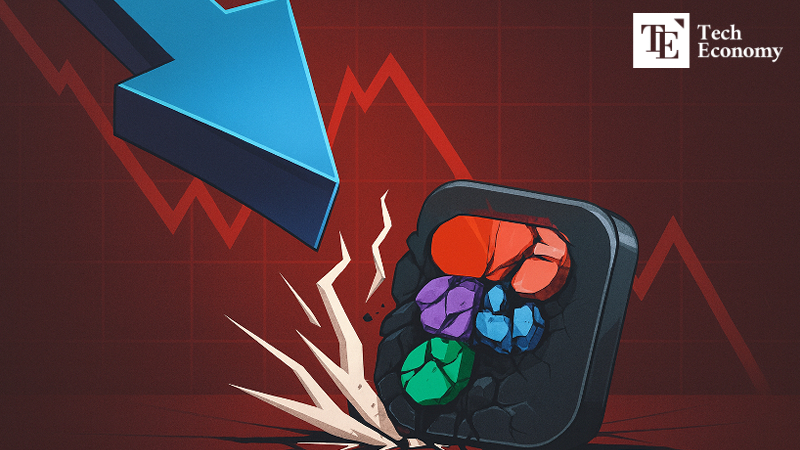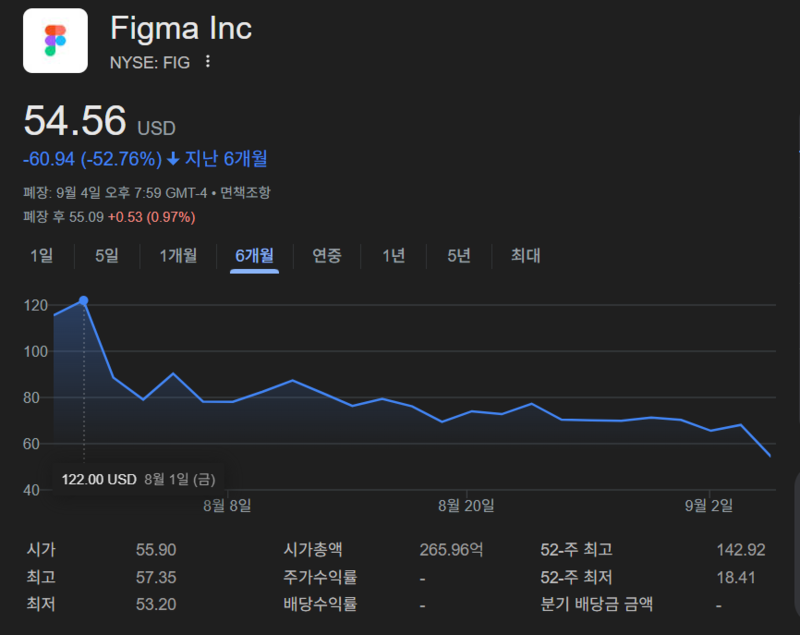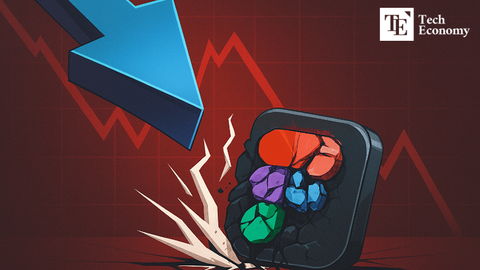Figma’s Post-IPO Slide Signals a Harsh Reality for Overvalued Tech Stocks
Input
Changed
Figma Shares Shine Briefly After IPO, Then Slide Steadily “Overpriced Compared to Big Tech Rivals,” Warns Wall Street Will Startups Eyeing a ‘Second Figma’ Moment Put IPO Plans on Hold?

The share price of U.S. design software company Figma has plunged. Following its second-quarter earnings release, investors who had held overly high expectations began pulling out, flooding the market with shares. On Wall Street, bearish outlooks on Figma’s stock are now emerging one after another.
Figma Shares Tumble After Q2 Earnings
On the 3rd (local time), Figma announced after market close that it had posted revenue of $249.6 million in the second quarter, up 41% from a year earlier. Earnings per share (EPS) also swung from a loss of -$4.39 to a profit of $0.04. Overall, the results met or slightly missed expectations. Wall Street’s consensus forecast for Q2 was $250 million in revenue and $0.09 EPS. The company’s Q3 revenue guidance of $263–265 million was roughly in line with market expectations of $262 million.
The market reacted negatively to the lack of an earnings beat. In after-hours trading, Figma’s stock plunged 14.22%. Adding to investor concerns, news broke that starting on the 4th, 25% of shares held by certain employees would be released from lockup, prompting heavy sell-offs. As a result, hopes for a rebound in Figma’s stock have dimmed further.
On its IPO debut on July 31, Figma shares soared 250% from the opening price, reaching a peak of $122 on August 1. Since then, however, the stock has fallen 41% in about a month. Including the latest after-hours plunge, the decline now amounts to 52.1% from the peak.

Wall Street Turns Bearish
Market sentiment has also shifted sharply negative. Brad Sills, an analyst at Bank of America, warned, “Figma is trading at an enormous premium compared to its larger competitors.” While Adobe—once a suitor for acquiring Figma—trades at just 17 times its 12-month forward earnings, Figma’s price-to-earnings ratio is approaching 200.
Sills further cautioned that intensifying competition could erode Figma’s market share or disrupt its business, and that advances in artificial intelligence (AI) could also weigh on its revenues. Figma, a cloud-based design software company that enables designers to collaborate on UI/UX projects in real time, saw explosive growth during the COVID-19 pandemic as remote work took hold. But with the rise of AI tools, demand for Figma among designers may decline, threatening its core competitive edge.
Some analysts argue that how Figma integrates AI into its platform will be the key determinant of its future. Michael Turrin of Wells Fargo noted, “The way Figma navigates AI adoption will define its fate. It could evolve into an all-in-one platform spanning ideation, design, and coding, but AI-driven automation could also reduce the very demand for designers, undermining Figma’s headcount-based subscription model.”
Speculative Tech Firms Struggle to Survive
What stands out is that Figma is not alone—shares of other recently listed tech companies have also been sliding. AI cloud infrastructure firm CoreWeave, for instance, was highly valued when it went public in June this year, but its stock has since retreated, cutting gains from its early peak. Stablecoin issuer Circle has shown a similar pattern. After soaring 168% on its first day of trading on the New York Stock Exchange in June—briefly pushing its market capitalization above $60 billion—Circle’s stock has now fallen to nearly half of its peak.
As tech stocks lose steam across the board, startups that had been eyeing IPOs are hitting the brakes. Many rushed to prepare listings after Figma’s market debut, hoping to become the “next Figma.” In early August, medical technology startup HeartFlow officially filed its S-1 registration with the U.S. Securities and Exchange Commission (SEC). Australian design platform Canva reportedly shared long-term IPO plans with some investors the same month. Stripe, Midjourney, Anduril, Revolut, and Motive have also been widely cited as likely candidates for upcoming IPOs.
But the rapid decline of Figma and other newly listed companies has shifted sentiment dramatically. These cases highlight the clear limitations of tech startups with weak fundamentals. As one market observer put it, “When companies without solid earnings rush to go public, their stock prices inevitably face sharp corrections. Figma’s experience serves as a serious warning for many tech startups that lack a clear profit model or stable results and are trading at inflated valuations.”






















Comment